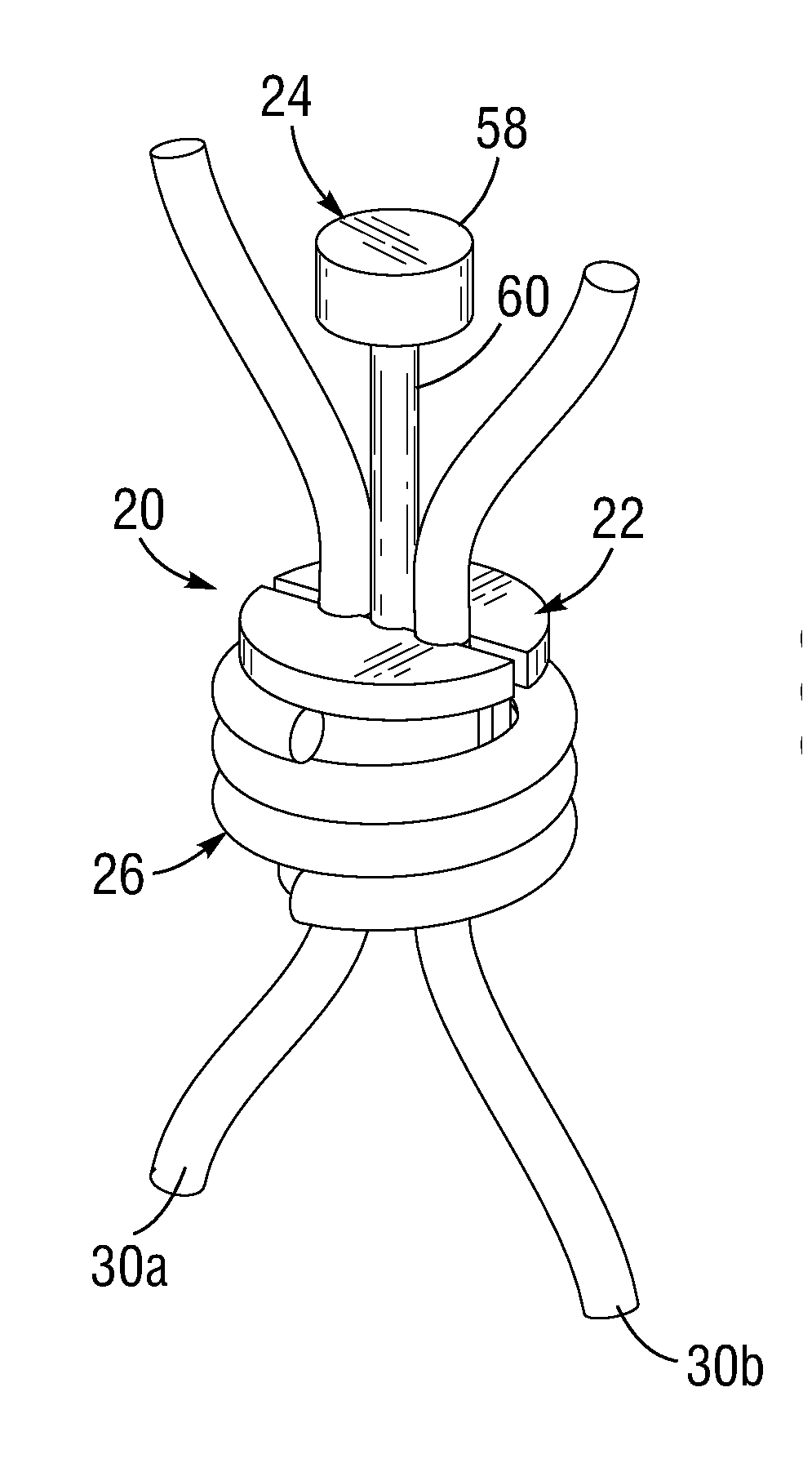Knotless suture anchoring devices and tools for implants
a technology of implanted tools and anchoring devices, which is applied in the field of implants for securing prosthetic implants, can solve the problems of increasing the difficulty of knotting, increasing the risk of tying knots, and devices being susceptible to changes in the magnitude of suture tension, so as to improve the ease of implantation, reduce surgical time and exposure, and be easy to install.
- Summary
- Abstract
- Description
- Claims
- Application Information
AI Technical Summary
Benefits of technology
Problems solved by technology
Method used
Image
Examples
Embodiment Construction
[0056]Various suture locking devices of the present invention comprise heart valve repair or replacement prosthesis anchors that improve ease of implantation, reduce surgical exposure, and improve prosthesis attachment. It should be appreciated that the principles and aspects of the embodiments disclosed and discussed are also applicable to other types of surgical procedures, namely annuloplasty ring implant for heart valve repair. Furthermore, certain embodiments may also be used in conjunction with other medical devices or other procedures not explicitly disclosed. However, the manner of adapting the embodiments described to various other devices and functionalities will become apparent to those of skill in the art in view of the description that follows.
[0057]A schematic drawing of a surgical prosthetic heart valve implanted in the heart 1 by traditional methods is shown in FIG. 1. The left atrium 2 and the left ventricle 3 are shown separated by the mitral valve 6. The aortic va...
PUM
 Login to View More
Login to View More Abstract
Description
Claims
Application Information
 Login to View More
Login to View More - R&D
- Intellectual Property
- Life Sciences
- Materials
- Tech Scout
- Unparalleled Data Quality
- Higher Quality Content
- 60% Fewer Hallucinations
Browse by: Latest US Patents, China's latest patents, Technical Efficacy Thesaurus, Application Domain, Technology Topic, Popular Technical Reports.
© 2025 PatSnap. All rights reserved.Legal|Privacy policy|Modern Slavery Act Transparency Statement|Sitemap|About US| Contact US: help@patsnap.com



